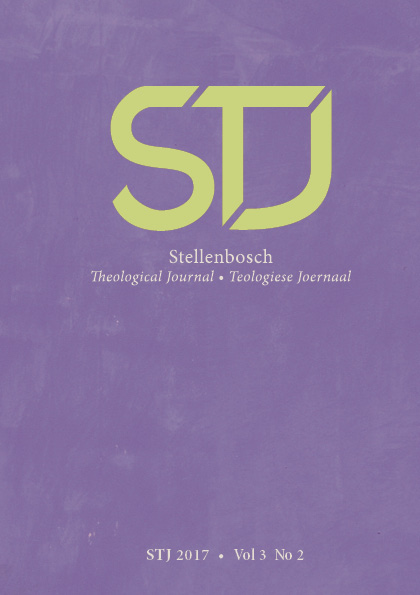Renewal, Renaissance, Reformation, or Revolution? Guiding concepts for social transformation in South Africa in the light of 16th century ecclesial reform and deform movements in Europe
DOI:
https://doi.org/10.17570/stj.2017.v3n2.a01Keywords:
Diagnostics, inequality, justice, justification, penultimate, Reformation, sin, social transformation, ultimateAbstract
This contribution is based on what may be called a pedagogical experiment in a postgraduate course on the 16th century European Reformations that was offered at the University of the Western Cape in the first semester of 2017. On the basis of a close reading of selected literature on the reformation, this contribution highlights the legacy of 16th century ecclesial movements for Southern Africa. The point of departure is located in the context of a discussion on a range of guiding concepts for social transformation in the contemporary (South) African context. It is argued that the deepest diagnosis of current (South) African discourse may well point to a view that none of the options for a category that may be regarded as more ultimate than justice (as a ‘remedy’) is attractive enough to muster sufficient moral energy without endless further contestations. Without necessarily suggesting what that ultimate maybe, it is suggested that a lack of an appealing notion of what is truly ultimate can undermine any attempts to address inequality (as our diagnosis) in current discourse. This necessarily calls attention to the relationship between the penultimate and the ultimate, and indeed between justification and justice.Published
How to Cite
Issue
Section
License
Copyright (c) 2017 Ernst M Conradie, Teddy C Sakupapa

This work is licensed under a Creative Commons Attribution 4.0 International License.
https://creativecommons.org/licenses/by/4.0/
Authors who publish with this journal agree to the following terms:
Authors retain copyright and grant the journal right of first publication with the work simultaneously licensed under a Creative Commons Attribution License that allows others to share the work with an acknowledgement of the work's authorship and initial publication in this journal.
Authors are able to enter into separate, additional contractual arrangements for the non-exclusive distribution of the journal's published version of the work (e.g., post it to an institutional repository or publish it in a book), with an acknowledgement of its initial publication in this journal.
Authors are permitted and encouraged to post their work online (e.g., in institutional repositories or on their website) prior to and during the submission process, as it can lead to productive exchanges, as well as earlier and greater citation of published work.
Please note that erroneous copyright information is given in the PDFs before Volume 9, 2023.



